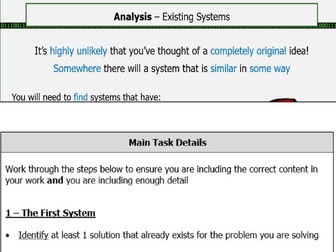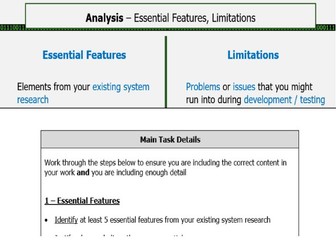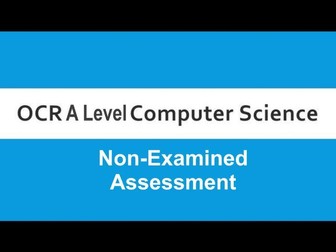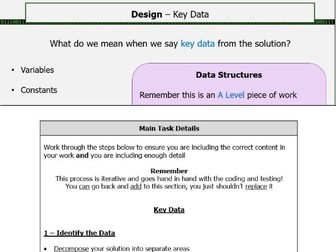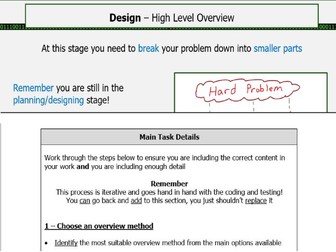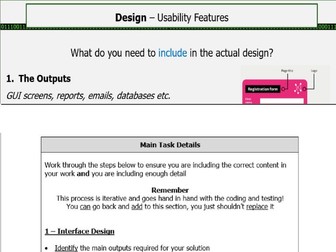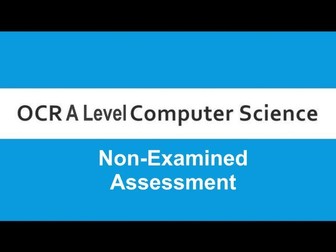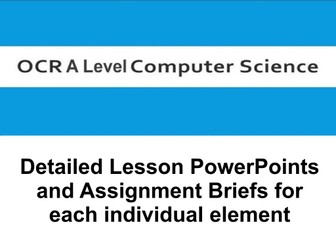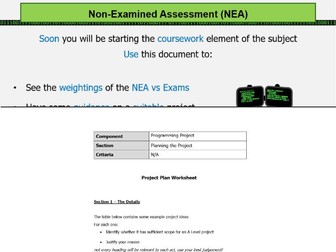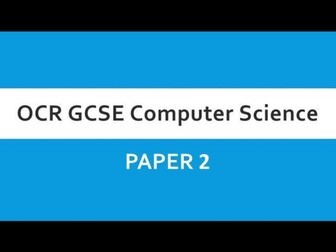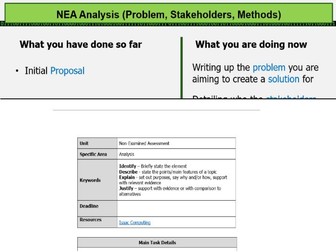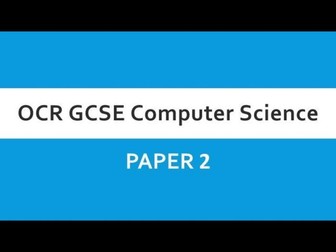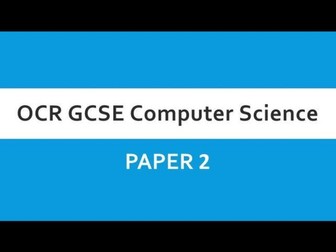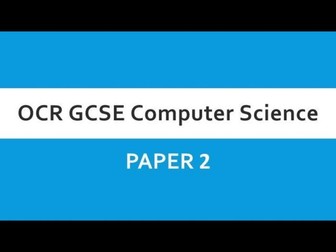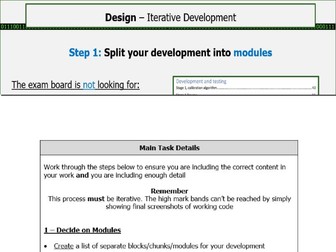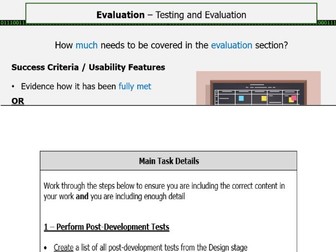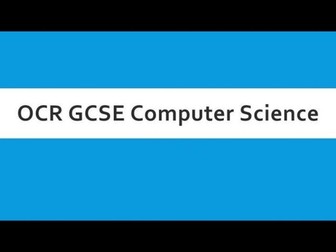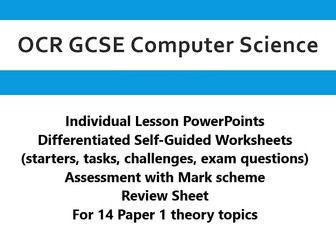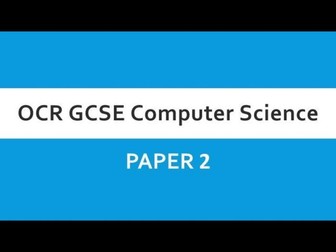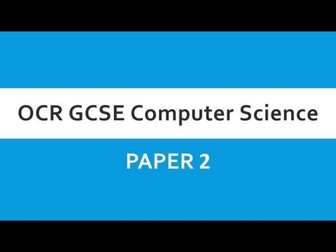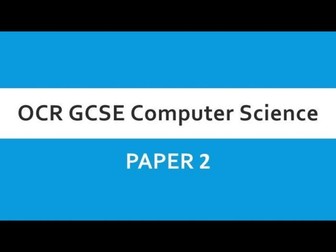A Level OCR Computer Science H446/03 - NEA 3.1.3 Analysis (Existing Solutions)
<p>Contains detailed lesson PowerPoint and Assignment Brief to support the teaching of the 3.1.3 element of the OCR NEA Analysis component.</p>
<p>The marking of my submissions has been upheld by OCR for the past 5 years.</p>
<p>3.1 Analysis components included</p>
<ul>
<li>
<p>3.1.3 (Existing Solutions)</p>
</li>
<li>
<p>Lesson PowerPoint includes:</p>
<code> - What should be included
- Example to practice thinking of existing systems and features for
</code>
</li>
<li>
<p>Assignment Brief includes:</p>
<code> - Description of exam keywords
- Breakdown of each section structure
- Reminder to reference and what to reference
- Simplified breakdown of marking criteria for each section</code>
</li>
</ul>
